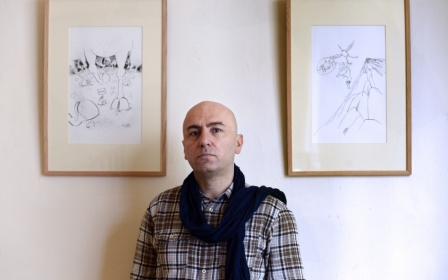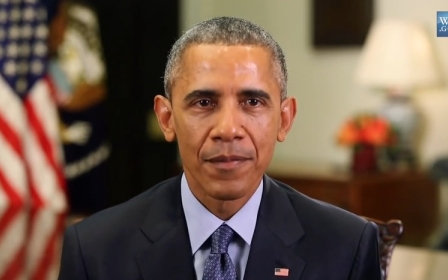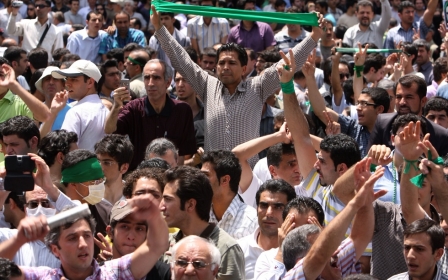Rafsanjani’s downfall bodes well for Iranian democracy

The conviction and sentencing of Mehdi Hashemi, the son of former Iranian president Ali Akbar Hashemi Rafsanjani, is the strongest signal yet that Iran may be starting to get tough on corruption and cronyism at the highest levels.
Hashemi’s conviction and harsh sentence of 15 years in jail - although subject to an appeal - comes on the heels of the five-year jail sentence handed to former vice president Mohammad Reza Rahimi in January.
Notwithstanding fears that Rahimi and Hashemi may yet evade justice by avoiding jail, the convictions alone are highly significant and send an unmistakeable message to corrupt elements across the length and breadth of the system.
Hashemi’s conviction carries political symbolism as well in as much as it points to the decline of clerical patronage and attendant political malaise and financial corruption.
Downfall of an oligarch
Many Iranian analysts have interpreted the harsh sentence handed down to Mehdi Hashemi as politically motivated and aimed at hammering the last nails on his father’s political coffin.
This analysis may contain a kernel of truth but it is a mistake to ignore the essential reality of the case, namely that prosecutors had a very strong case against Hashemi junior, who besides corruption was also convicted on an additional security-related charge.
Undoubtedly the sentence damages Hashemi Rafsanjani and may come to be regarded as the moment when he was finally ousted from the system. A key figure in the post-revolutionary Iranian establishment, Rafsanjani fell out of favour in the summer of 2009 in the wake of street protests following Ahmadinejad’s controversial re-election to the presidency.
Capitalising on his impeccable revolutionary credentials, Rafsanjani, in his capacity as speaker of the Majlis (parliament), played a pivotal role in the consolidation of the Islamic Republic in the volatile 1980s. This was followed by two terms as president (1989-1997), when he gained additional credit by spearheading Iran’s recovery from the ruinous Iran-Iraq War.
Despite his successes, controversy never failed to surround Rafsanjani, who has been consistently accused of abusing his position to empower and enrich friends and family.
For a while, Rafsanjani tried to balance and even supersede the authority of supreme leader Ayatollah Seyed Ali Khamenei, whom he had helped to appoint following the demise of charismatic revolutionary leader Ayatollah Ruhollah Khomeini in June 1989.
Increasingly sidelined during the second term of his presidency (1993-1997), Rafsanjani failed to make an impact in the reform years of the late 1990s and early 2000s under former president Mohammad Khatami.
Increasingly frustrated and ambitious as ever, Rafsanjani misinterpreted the post-election disturbances of June 2009 and subsequently over-reached, provoking a strong reaction from conservative factions.
Whilst stripped of real power in the past six years, Rafsanjani was allowed to keep a ceremonial role as the head of the largely irrelevant Expediency Council - which mediates disputes between different branches of government.
Rafsanjani’s apparent failure at negotiating a “soft” sentence for his son speaks to the complete loss of influence and may well be interpreted in due course as symbolising the finality of his downfall.
In view of Rafsanjani’s potent image as the arch oligarch, it is difficult to miss wider implications associated with his demise, namely the targeting of the entire system of clerical patronage which has inflicted considerable reputational damage on the Islamic Republic.
Combatting corruption
The convicted Mehdi Hashemi effortlessly personifies the “Agha Zadeh” image. Literally translated as the “chief’s son,” this term has come to symbolise arguably the most important layer of corruption in Iran.
Largely bereft of outstanding talent and ability and yet parachuted into the commanding heights of commerce and the economy, the sons of Ayatollahs and leading establishment clerics have come to symbolise the Islamic Republic’s meritocracy deficit.
The real strength of the Agha Zadehs’ influence is hard to gauge and public perceptions of widespread abuse may be over-stated. Nevertheless, targeting key figures, prosecuting them and sending them to jail goes a long way in addressing public concerns and restoring confidence in the integrity of the Islamic Republic.
Anti-corruption campaigns are nothing new in Iran. Since the ending of the Iran-Iraq War in 1988, successive governments have pledged to fight graft, cronyism and the misuse of public funds. The supreme leader Ayatollah Khamenei has lent his blessing to these campaigns in the hope that government officials would feel emboldened to challenge corrupt procedures and elements.
Despite the publicity surrounding these campaigns, they have failed to achieve even minimum goals, as evidenced by public perceptions of widespread cronyism and corruption. The key reason underlying this poor performance is the failure to make a connection to politics and specifically the pressing need to reform political culture.
The failure to address political issues has created a vacuum that has been eagerly exploited by an assortment of political enemies and unsympathetic critics who have tried to cause a massive distraction by painting the Islamic Revolutionary Guards Corps (IRGC) as the main culprits.
Although far from perfect, the IRGC is arguably the cleanest and most efficient institution in Iran. By focussing on the Agha Zadehs and the extensive networks of patronage they employ, the authorities can generate a rational and goal-orientated national debate on the roots and causes of corruption in Iran.
Ultimately, the success or failure of this latest anti-corruption drive rests on the extent to which the authorities are willing to pursue some of the best connected people in Iran. The downfall of the biggest Agha Zadeh in town is a cause for guarded optimism.
- Mahan Abedin is an analyst of Iranian politics. He is the director of the research group Dysart Consulting.
The views expressed in this article belong to the author and do not necessarily reflect the editorial policy of Middle East Eye.
Photo: President Hassan Rouhani (R) greets former president and head of Expediency Council, Akbar Hashemi Rafsanjani (L) as they attend a session to appoint a new chairman on 10 March, in Tehran (AFP)
New MEE newsletter: Jerusalem Dispatch
Sign up to get the latest insights and analysis on Israel-Palestine, alongside Turkey Unpacked and other MEE newsletters
Middle East Eye delivers independent and unrivalled coverage and analysis of the Middle East, North Africa and beyond. To learn more about republishing this content and the associated fees, please fill out this form. More about MEE can be found here.





